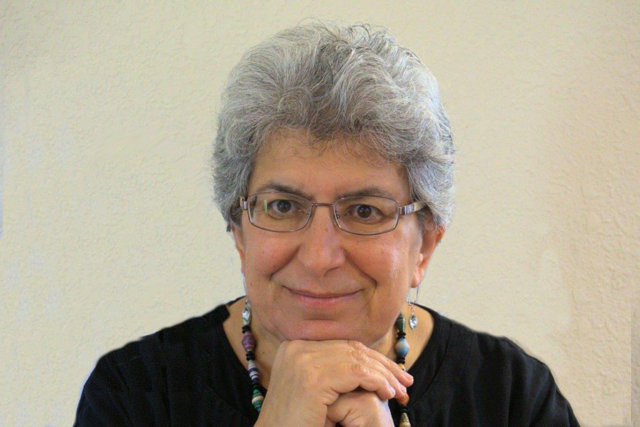Fibre to everywhere
 Sunday, July 9, 2023 at 7:01PM
Sunday, July 9, 2023 at 7:01PM For years, passive optical networks (PON) were all about fibre-to-the-premise, particularly fibre-to-the-home. Japan, South Korea, and China led the market with massive PON deployments.
"Now the focus is on fibre-to-everywhere, whether it's a home, a business, a school, a university, an enterprise, a traffic light," says Julie Kunstler, chief analyst, broadband access intelligence at Omdia.
 Julie Kunstler
Julie Kunstler
Meanwhile, in the US, government funding is spurring fibre deployments, especially in underserved areas.
PON usage
Omdia conducted a 25-gigabit and 50-gigabit PON survey (see chart above) earlier this year that included basic questions such as how operators use PON infrastructure.
Many service providers use PON for other applications besides residential services to grow revenues.
"There are a good number of operators that are using that same PON infrastructure for business services, especially with XGS-PON 10-Gigabit PON," says Kunstler. "A symmetrical 2-gigabit, 5-gigabit, 8-gigabit link is certainly enough for many small and medium-sized businesses."
This requires the operator to undertake software integration involving the operations support system (OSS) and business support system (BSS) to manage subscriptions and billing for the two classes of customers.
The survey also highlighted PON being used for transport, not just wireless backhaul but traffic aggregation. "Once you have XGS-PON in place, you have a lot of capability to haul data around," says Kunstler.
Vendors have responded with more varied equipment, not just PON optical line terminals (OLTs) for the central office.
For the central office, a key driver has been to reduce the space a PON chassis occupies, requiring denser line cards and port densities per line card. But OLTs are also being deployed in the field that support residential users and other applications with requirements such as low latency.
Government funding
Funding for broadband in the US, Europe, and the UK have increased since Covid, highlighting its crucial role.
"It [Covid] created two classes of people, those that could participate in the remote hybrid work environment, and those that could not," says Robert Conger, senior vice president of technology and strategy at Adtran.
 Robert Conger
Robert Conger
Conger stresses there has always been government funding for broadband, but it was a fraction of what is now being earmarked.
In the US, two significant funds have been added to the Rural Digital Opportunity Fund (RDOF), the Federal Communications Commission initiative that existed before Covid. RDOF is a $20.8 billion programme funded in two phases.
The two significant new funds are the American Rescue Plan, a $25 billion to invest in affordable high-speed internet and connectivity and the $42.5 billion for deployments in underserved areas, known as the Broadband Equity, Access, and Deployment (BEAD) programme.
"The funding will find its way into the service providers' hands late next year, while 2025 and 2026 will be the big years," says Conger.
The European Union (EU), comprising 27 member countries, has defined broadband as an essential service for its citizens, like electricity and water. The EU's goal is to offer complete coverage (100 megabit-per-sec) in rural areas by 2025, while by 2030, the goal is to deliver a gigabit network to all EU households.
In Italy, for example, the plan was to spend 3% ($8.3 billion) of an EU emergency package on broadband, 5G and satellite infrastructure. The EU package was awarded in 2021 to aid Italy's recovery following Covid.
Meanwhile, the UK government has the £5 billion ($6.4 billion) Project Gigabit to provide broadband to rural areas currently ignored by the CSPs.
These fundings enable operators to deploy 'fibre all the way' and use the infrastructure for applications alongside residential services. Indeed, the funds can be seen as a one-off subsidy enabling fibre deployments in regions previously ignored by operators due to the lack of a viable business case.
Broadband solutions
The US broadband funding has also grown the PON vendor landscape and diversity of solutions, says Kunstler.
PON equipment can be added to switches and routers and to digital nodes being deployed by cable operators. Such equipment enables the operators to make pointed PON deployments, which Kunstler calls 'surgical PON'. This allows an operator to deploy quickly to benefit from regions where a quicker uptake is expected or to respond to competition.
"We're seeing that type of surgical approach being done by the larger US cable operators and by several telcos," she says.
Such cable operators have already invested heavily in their networks, and with the deployment of DOCSIS 3.1 technology, their coax networks continue to support increased broadband speeds. But such cable operators can now add PON selectively where there is more demand or competition.
Equally, the US has many small cable operators with pockets of subscribers, each with typically several thousand consumers. Instead of upgrading to DOCSIS 3.1 running over their coax cable assets, small operators may decide to go to fibre and use PON to serve such users.
Another broadband technology suited to more remote deployments is fixed wireless access. To date, fixed wireless access remains the most successful 5G business case in generating new revenues for an operator.
Fixed wireless access's issue, says Kunstler, is that it is not the best use of finite spectrum, and the service has experienced consumer churn as the quality of experience decreases as more subscribers join.
However, Omdia does see the value of fixed wireless access for some rural regions and urban neighbourhoods.
25G and 50G PON
A key advantage of fibre is its ability to support bandwidth increases. "You can easily increase your bandwidth over fibre by changing out the GPON for XGS-PON or, in the future, 25-gigabit or 50-gigabit PON and whatever comes after that," says Kunstler.

A benefit of PON is that such upgrades can be done without touching the optical distribution plant.
The cost of customer premise equipment has also come down such that several US operators are deploying fibre and XGS-PON or 10G-EPON with 10-gigabit endpoints because it costs less than doing a truck roll when the customer eventually upgrades.
"We are seeing a very strong appetite for 1 gigabit and multi-gigabit services," says Kunstler. A multi-gigabit service to the home only costs a few dollars more, and no household users complain when there is ample bandwidth to be shared.
Another factor is energy savings for the operator. XGS-PON has a 4x bandwidth increase on GPON but doesn't consume 4x the power.
Meanwhile, Adtran's Conger believes that a lot of fibre will be put into the ground in the US over five years, involving many smaller operators.
Conger's parents live in a rural area of the US and do not have broadband, but at last, a local utility is installing fibre. "They will have it soon, so it [the government programme] is having an impact," he says.



Reader Comments